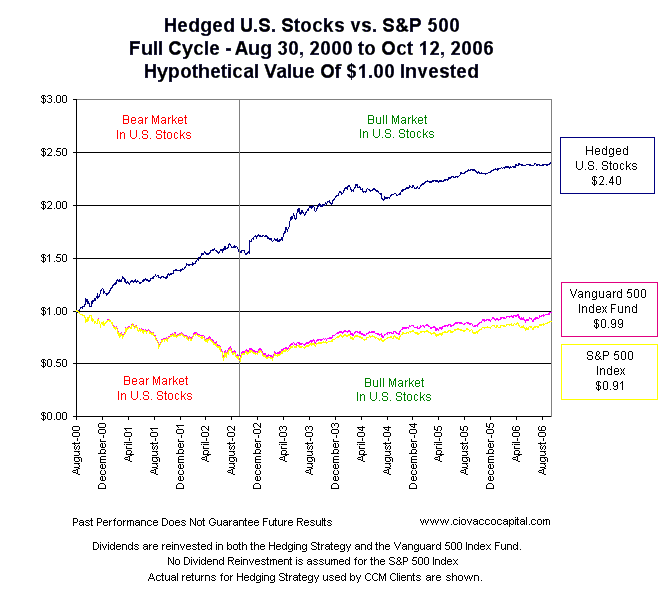Commodities The Portfolio Hedge_3
Post on: 25 Апрель, 2015 No Comment

For primary producers, bulk handlers and consumers of futures market products, the main purpose of the futures market is for hedging purposes. Hedging means locking in an acceptable price for future delivery or receival of the commodity.
A selling hedge (or short hedge) is what you might expect a farmer to use. A month before harvest the farmer calculates he will harvest 50,000 bushels of wheat, and notices futures contracts are going at $3.50 a bushel. If this price is acceptable, and the farmer feels that the price may drop at harvest time, he short sells 10 5,000 bushel wheat contracts for $3.50 each.
If, after harvest the spot price of wheat really does fall, to $3.00 a bushel, the farmer will take a $0.50×50,000 = $25,000 profit on his short, but due to the poor price of wheat he only gets $150,000 for his crop. The final amount of money he makes is $175,000, which is the same as getting $3.50 per bushel. His hedge locked in the price of $3.50.
If the price actually rose instead, a catastrophe knocked out a large proportion of his colleagues’ wheat and post-harvest price rose to $4.00 a bushel, his loss on the futures would be $25,000 but the amount of money he gets for the crop is $200,000. His total takings are still $175,000, so he still only got $3.50 a bushel.
This is an example of a perfect hedge. something that doesn’t actually often happen in real life. If something went wrong with the crop and it was found to be of lower quality than the standard futures contract specification, if the amount harvested was not the 50,000 bushels he had hoped for, or if the spot price of wheat doesn’t exactly match the settlement price, then this would be an imperfect hedge. The difference between spot and futures is known as the basis. basis = futures price minus spot price, an imperfect hedge always results when basis is not zero, which is the usual situation.
The same principle applies for a buying hedge (or long hedge). If a jeweler wishes to lock in the present price of gold, fearing an increase, he goes long the required number of contracts and takes delivery on expiry. If the price of gold fell he would make a loss on his futures position, but he would be assured of receiving gold at the price he hedged at.
Not all commodities are covered by a futures contract, but often competing products are highly correlated with the prices of futures traded commodities. For example palm oil is an important commodity, but is not traded on any futures exchange. The price does, however, track soybean oil reasonably well and imperfect hedging can be done on palm oil via an equivalent value hedge on soybean oil.
Imperfect hedging also is the norm for very similar products. The contract traded for coffee futures refers to a specific type of coffee, Columbian coffee beans. Growers of other types of coffee hedge with the standard coffee contracts, however may not receive the same cash price for their beans as Columbian bean growers do.

Basis variation often has seasonal tendencies, sophisticated hedgers take into account the seasonality of basis changes (which may fluctuate from positive to negative values), to improve hedging efficiency.
If the size of the hedging position exceeds the amount of commodity on hand, the hedger exposes himself to a speculative risk. whatever portion of the hedge in excess of needs carries the same risk inherant in any speculative futures trading position, as a result hedgers usually hedge the maximum amount of their commodity without exceeding this value. You can only trade a whole number of contracts and each contract covers a large fixed amount of the commodity, so hedging can not be perfect unless the production or needs happens to perfectly match the quantity of some whole number of contracts.
At times it may be necessary to hedge a ratio of futures contracts gainst the physical commodity, in situations where the identical commodity is not traded but the spot price of the commodity is highly correlated with some multiple of a futures price, a ratio is adopted to match the volatilities of the two commodity prices.
Hedging also applies to financial futures, high quality commercial bonds can be hedged with T-bill futures, and of course index futures can be hedged against stocks, which can be done either by purchasing or selling a portfolio consisting of the same weighting of the same stocks in the index or an imperfect hedge can be done by making a smaller portfolio of the more important stocks in an index which should adequately approximate the index stocks as a whole.














